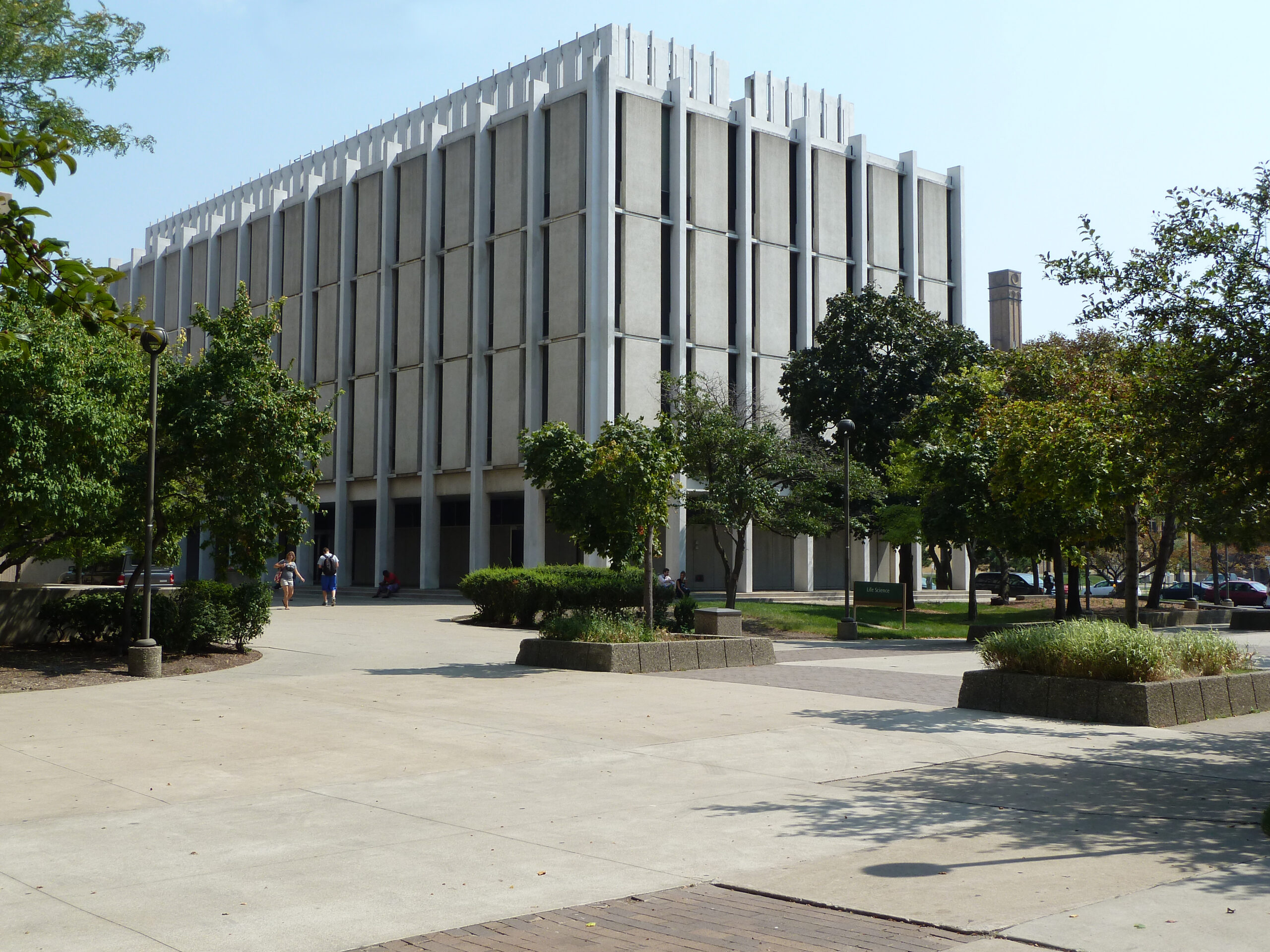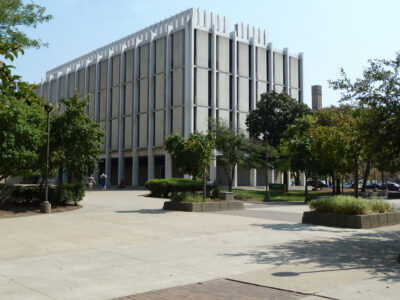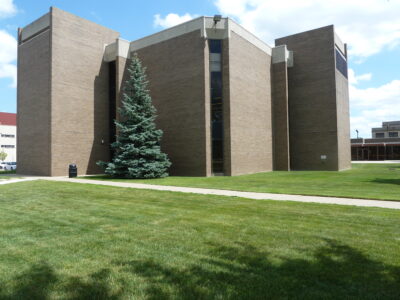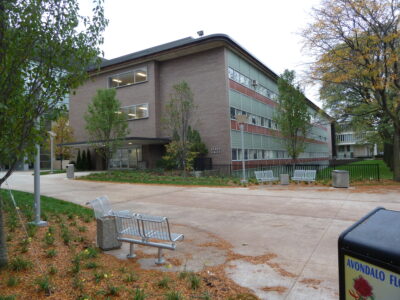The Wayne State University Life Science Building, also known as the Life Science Research Center, was constructed to house the departments of biology and chemistry, and included facilities for labs, classrooms, offices, and animal rooms.
Due to rising project costs, architect Albert Kahn pulled out from the building project prior to its completion. It was originally intended as the second phase of Science Hall (Ralph Calder, architect, 1949); the two buildings are connected by a glassed-in passage way on the second and third floors, as well as a basement passage.
Albert Kahn, who began his architectural practice in Detroit in 1895 in Detroit, was known for pioneering the use of reinforced concrete in industrial architecture with his brother Julius. Albert Kahn became the architect of choice for automaker Henry Ford, designing dozens of factory buildings. At least two of them, the River Rouge Glass Plant (1922) in Detroit and the Warren Tank Arsenal (1940) are cited as inspiring the Modern Movement. Kahn’s work influenced the architect Le Corbusier and was a foundation for the creation of the International Style. After Kahn’s death in 1942 the firm continued designing some of the Detroit area’s outstanding Modern buildings, continuing to explore the possibilities of technology in the Modernist language of simplicity, light, and functionality as expressed in the National Bank of Detroit (1958) and Southfield’s Congregation Shaarey Zedek (1962).
The four-story Life Science Building was constructed using pre-cast concrete. It is surrounded by an arcade on the first level to create a visually inviting atmosphere. Additional aesthetic features include the first floor labs’ horizontal windows, which serve to minimize distraction but maintain contact with the outdoors.
A unique feature of the Life Science Building was the installation of its “working cornerstone.” Instead of the usual decorative cornerstone, the Life Science Building features a cornerstone that doubled as a science experiment. The cornerstone is composed of a bronze plaque containing a box holding “long-lived isotopes and some highly resistant bacterial forms.” This box can be opened when the building is demolished (at the time the building was erected, this was expected to happen at least one hundred years in the future), and will provide scientists with “information on long range effects of low level radiation.”
(Text excerpted from the Wayne State University Walking Tour script developed by the City of Detroit Historic Designation Advisory Board staff.)





